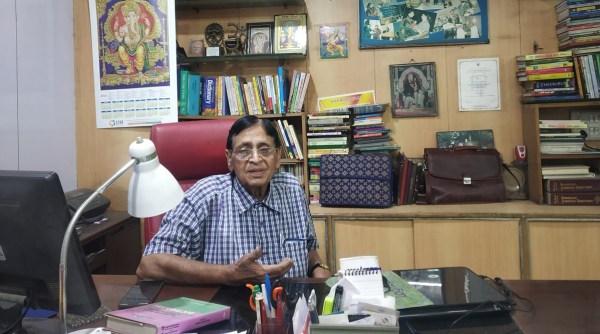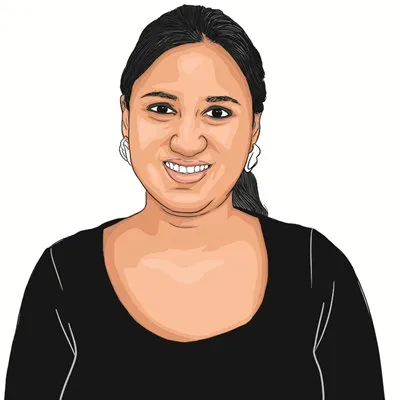Delhi Rewind: How Partition migrants made Daryaganj a hub for Hindi publishers
When Amarnath Varma, 87, and his family decided to move out of Multan in the wake of the Partition, the most prized possessions they transferred to Delhi beforehand were thousands of books that lined their bookstore. Varma’s grandfather had started the books business, selling titles in Urdu, Hindi and Punjabi.
 Star Publications was among several publishers that came up in the area. (Express Photo by Amit Mehra)
Star Publications was among several publishers that came up in the area. (Express Photo by Amit Mehra)When Amarnath Varma, 87, and his family decided to move out of Multan in the wake of the Partition, the most prized possessions they transferred to Delhi beforehand were thousands of books that lined their bookstore. Varma’s grandfather had started the books business, selling titles in Urdu, Hindi and Punjabi.
As they struggled to put together their uprooted life in Delhi’s Paharganj, the family managed to find a small vacant shop in Dariba Kalan to restart their bookshop as ‘Punjabi Pustak Bhandar’. But in the chaotic days following the Partition, it was not easy for the books business to take off, said Varma. “The only books in demand were Hindu religious ones.”
After struggling to make the bookshop work, in the mid-1950s Varma came across Hind Pocket Books, the publishing house started by Dina Nath Malhotra and credited with developing the market for paperback Hindi books in Delhi. Like Varma, Malhotra too was a Partition migrant from Lahore and had set up his business in Daryaganj, the thriving commercial district of the old city. “I thought it was a great idea,” said Varma. “I too decided to start a similar business. Within the next couple of years, we managed to publish some 300 pocket book titles.”
Soon after, Varma too moved his business to Daryaganj, in the space behind Moti Mahal restaurant, yet another product of Partition migration in Delhi. He renamed it Star Publications. For ambitious Partition migrants like Varma, Daryaganj provided a most suitable region to restart their lives in a new country and thereby turning it into a publishing hub.
“Daryaganj has had so many different avatars,” explained historian and author Swapna Liddle. Under the Mughals, Faiz Bazaar was established here between Delhi Gate of the Red Fort to Delhi Gate of the city. The Faiz Bazaar, as explained by Liddle, was one of the two main markets under the Mughals, the other being Chandni Chowk.
 Amarnath Varma (87) moved his bookshop to Daryaganj in the mid-1950s. (Adrija Roychowdhury)
Amarnath Varma (87) moved his bookshop to Daryaganj in the mid-1950s. (Adrija Roychowdhury)
“In the early 19th Century, some big estates and European quarters came up here. The British also put up their military cantonment here. After 1857 this area changed quite drastically. A number of estates of the nawabs were confiscated. Most of the Europeans living here were the first to be killed during the revolt and the British removed their cantonment as well,” explained Liddle.
Consequently, the area remained vacant for a long time. It was rebuilt again in 1911 when the new capital was established in Delhi. “When a city becomes a capital a lot of business and non-administrative personnel also move to the city. Thereafter a lot of the educational institutions and commercial buildings came up in this area,” said Liddle.
Yet another avatar was bestowed upon Daryaganj after Independence, that of being a hub for publishing.
“The publishing industry of present day Daryaganj (mostly Ansari Road) was established by migrants who moved to the area after the Partition of India and Pakistan, mostly in the late 1950s and early 1960s, when the historic Faiz Bazaar that appears in almost all significant maps and drawings of Delhi was renamed New Daryaganj,” said Kanupriya Dhingra, assistant professor at Jindal School of Languages and Literature, OP Jindal Global University.
“Daryaganj’s proximity to the paper markets of Chawri Bazaar was an attractive potential. While the area was commercialised soon after 1947 — with shops dealing in consumer durables such as bicycles, radios, musical and medical instruments — the chase for publishers to set up offices in Daryaganj began more or less after Oxford University Press moved into the locality in 1971, and in no time Ansari Road became the hub of publishers that it is today,” added Dhingra, who is also currently working on a monograph on Daryaganj and its book economy.
Apart from Star Publications and Hind Pocket Books, some other well-known publishers that came up in and around the area included Prakash Prakashan, Rajpal & Sons, Vani Prakashan Group and Motilal Banarsidass.
An interesting transformation that the Partition migrant publishers brought about in Delhi’s book culture is the popularity of Hindi publications. In the years immediately following the Partition, Urdu had lost the stature and popularity it once enjoyed in India. The only market for Urdu publications was restricted to the Urdu Bazaar area around Jama Masjid.
“The hub of Hindi publication was in Banaras and Prayagraj. It is only in the last 75 years that Delhi became the intellectual centre for Hindi literature,” said Aditi Maheshwari-Goyal, who is a managing trustee at Vani Foundation and heads the Department of Copyright and Translation at Vani Prakashan. “Delhi was the political hub for the Independence movement and like any other movement, the freedom movement also had to happen in a certain language. Hindi had emerged as that connecting language; it touched the common psyche and got everyone on the streets in the fight for Independence.”
Varma said that initially, he did publish a few books in Urdu, the first being a collection of film songs by the poet Sahir Ludhianvi titled ‘Gaata Jaaye Banjara’. “But Urdu had lost all popularity, so we published very few books in the language,” he said.
In course of time, Varma became friends with some of the tallest names in Hindi literature who were also his authors, including Amrita Pritam, Krishan Chander, Ramdhari Singh Dinkar and Kamleshwar. His best-selling author was novelist and screenwriter Gulshan Nanda. “Out of the 35 books written by Nanda, I published 25,” said Varma.
Since the 1970s and with the establishment of the Oxford University Press, Daryaganj found popularity among the English publications as well. “The biggest advantage with the area was the logistics. The Post Office is close by and so is the New Delhi Railway Station, so it is easy to supply books from here,” said Maheshwari-Goyal.
With the growth in popularity of English reading, most of the Hindi publishers also expanded in English publishing. Varma narrated how, in the course of his career, he journeyed to 61 countries and picked up some lucrative ideas. Beaming with pride, he said he has published in over 80 languages. His books are regularly supplied to the Library of Congress in Washington DC and are part of the Frankfurt Book Fair.













